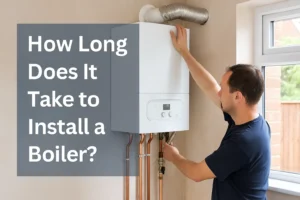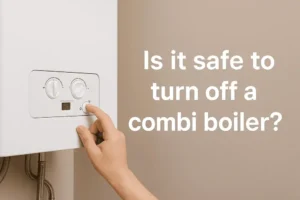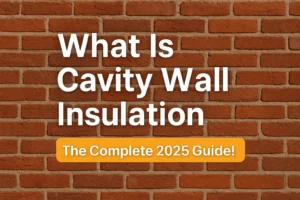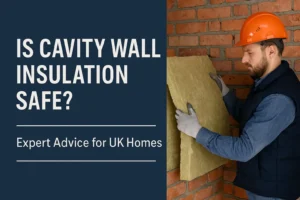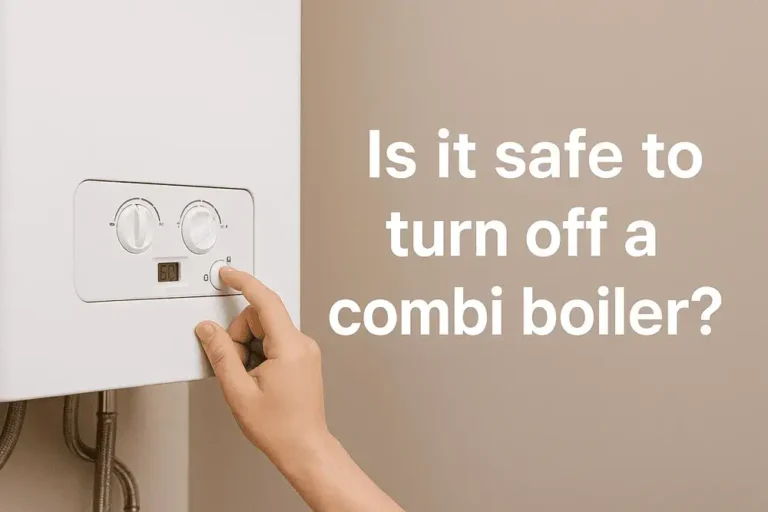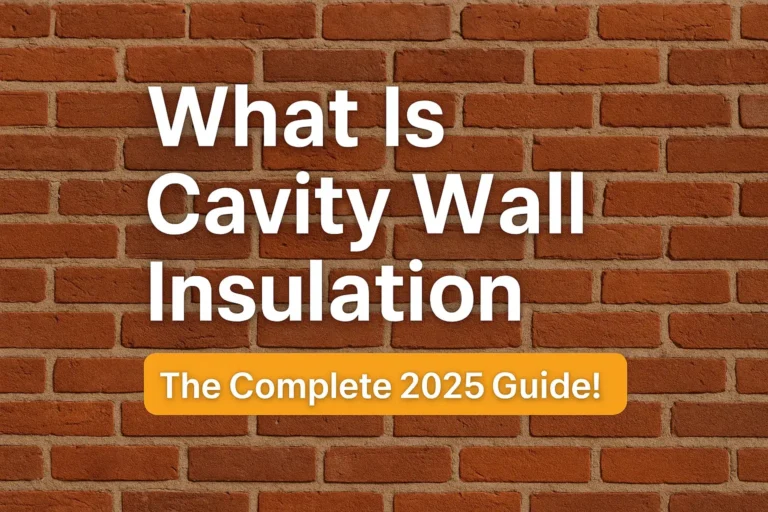With rising energy costs and growing awareness around energy efficiency, many UK homeowners are asking the same question – is cavity wall insulation really worth it?
Table of Contents
ToggleFor most homes with suitable wall construction, the answer is a clear YES. In 2025, cavity wall insulation remains one of the most cost-effective ways to reduce heat loss through external walls by up to 35%, lower energy bills by as much as £400 a year (according to the Energy Saving Trust, 2024), and improve overall indoor comfort during the colder months.
It also helps cut carbon emissions and can boost your home’s EPC rating, which in turn may increase its resale value. Best of all, under the government’s ECO4 scheme, many households are eligible for free cavity wall insulation making it a highly worthwhile investment with minimal upfront cost.
1. What Is Cavity Wall Insulation and How Does It Work?
Cavity wall insulation is a method of filling the gap between the inner and outer walls of your home with insulating material to prevent heat from escaping. Most homes built between the 1920s and early 1990s have cavity walls, which are essentially two layers of brick or blockwork with a hollow space in between.
The process involves drilling small holes into the outer wall, injecting insulation (usually mineral wool or polystyrene beads) into the cavity, and then sealing the holes. Once complete, the insulation reduces heat loss through the walls by up to 35%, making your home significantly warmer and more energy efficient. Here’s a complete blog on how cavity wall insulation works.
Check If You Qualify For FREE Cavity Wall Insulation
2. What’s the Environmental Impact of Cavity Wall Insulation?
Insulating cavity walls doesn’t just benefit your comfort and wallet — it also reduces your environmental impact. According to the Energy Saving Trust, installing cavity wall insulation can cut your home’s carbon emissions by as much as 550kg of CO₂ per year. That’s a meaningful step toward a more sustainable future, especially if millions of homes make the same change.
It also helps improve your home’s EPC (Energy Performance Certificate) rating, which could increase your property’s value and make it more appealing to buyers.
3. Who Is Cavity Wall Insulation Suitable For?
Cavity wall insulation is ideal for many UK homes — but it’s not suitable for every property. The key is knowing your home’s construction type and condition. It’s generally suitable if:
- Your home was built after 1920 and has cavity walls.
- The external walls are uninsulated or only partially filled.
- Your property is well-maintained, with no signs of damp or structural damage.
- You have a low EPC rating (D or below) and want to cut heating costs.
- You are on qualifying benefits or low income (making you eligible for ECO4 funding).
Homes with brick or block construction and walls over 275mm thick usually have cavities. We always carry out a free survey to confirm suitability before proceeding.
4. How Does Cavity Wall Insulation Compare to Other Methods?
Different insulation types offer different benefits. The table below shows how cavity wall insulation stacks up against other popular insulation methods:
| Insulation Type | Typical Cost | Estimated Annual Saving | Best For |
|---|---|---|---|
| Cavity Wall Insulation | £1,000 – £1,500 | £300 – £400 | Homes with cavity walls (post-1920s) |
| Loft Insulation | £500 – £1,200 | £200 – £250 | Homes with accessible lofts |
| Solid Wall Insulation | £8,000 – £12,000 | £400 – £500 | Older solid-wall homes (pre-1920s) |
| Floor Insulation | £1,500 – £2,500 | £80 – £120 | Homes with suspended timber floors |
While solid wall insulation offers high energy savings, its upfront cost is far greater than cavity wall insulation. Cavity wall insulation delivers excellent value for money, especially when installed for free through ECO4 funding.
5. What’s the Process for Installing Cavity Wall Insulation?
Getting cavity wall insulation is a quick and straightforward process. It starts with a free home survey, where a trained assessor checks your walls and determines if they’re suitable. After that, we confirm your eligibility for funding and schedule the install.

Installation itself usually takes just 2–4 hours, depending on the size and layout of the property. Our installers drill small holes in the mortar joints of the external wall, fill the cavity with insulation, and make good any surface finishes. Once completed, you’ll begin noticing the benefits almost immediately.
6. Are There Alternatives to Cavity Wall Insulation?
If your property doesn’t have cavity walls or they’re already insulated, you still have several options to boost energy performance:
- Internal Wall Insulation (IWI) is suitable for older solid-walled homes and involves fixing insulation boards to internal walls.
- External Wall Insulation (EWI) adds insulation to the exterior surface and is ideal for solid brick properties.
- Room-in-roof insulation is perfect for loft conversions or attic rooms.
- Loft and underfloor insulation provide additional energy savings and are often quick to install.
Our assessors will advise on the most suitable measures based on your home’s construction and condition.
7. How Can I Tell If My Walls Already Have Insulation?
Before installing cavity wall insulation, it’s important to confirm whether your home has already had it installed — especially if you moved in after it may have been done by a previous owner or through a past government scheme.
Here are some simple ways to check:
1. Look for drill marks on external walls
Small, evenly spaced holes in the mortar (often filled with cement) are a clear sign that insulation has been installed previously. These are usually arranged in a grid pattern across external walls.
2. Check your EPC (Energy Performance Certificate)
You can search for your home’s EPC for free at gov.uk/find-energy-certificate. If cavity wall insulation is present, it should be listed under energy-saving features.
3. Ask the previous owner or estate agent
If your property was purchased recently, the seller or agent may have records of insulation works or guarantees provided at the time of installation.
4. Arrange a cavity inspection
At H&R Energy, we offer free cavity checks using a borescope (small camera) or thermal imaging, which helps confirm the presence and condition of existing insulation.
If you’re unsure, it’s always best to have a professional survey, especially before applying for funding or carrying out any upgrades.
8. How Long Does Cavity Wall Insulation Last?
Cavity wall insulation is a long-lasting upgrade. When properly installed, it can remain effective for 25 years or more, often matching the lifespan of the building itself.
Most installations come with a 25-year guarantee, especially if done through certified installers under schemes like CIGA or TrustMark. Unless there’s damage or damp-related issues, it rarely needs to be replaced.
If your insulation was added more than 20 years ago, or if you suspect issues, it’s worth booking an inspection to check its condition.
9. How Can I Maintain My Existing Cavity Wall Insulation?
Cavity wall insulation is generally maintenance-free, but to keep it performing well, a few simple checks go a long way.
- Inspect external walls regularly for cracks or damaged brickwork. Water can enter through gaps and affect insulation over time.
- Keep gutters and downpipes clear to avoid water spilling onto walls, especially in older properties.
- Avoid drilling into external walls without checking for insulation this helps prevent gaps or damage.
If you notice any cold spots, rising energy bills, or signs of damp, it may be time for a professional inspection. H&R Energy offers free cavity wall checks to make sure your insulation is still effective.
10. Is It Worth Topping Up Cavity Wall Insulation?
In most cases, no — topping up cavity wall insulation isn’t necessary. Modern insulation materials are designed to last for decades without needing additional filling.
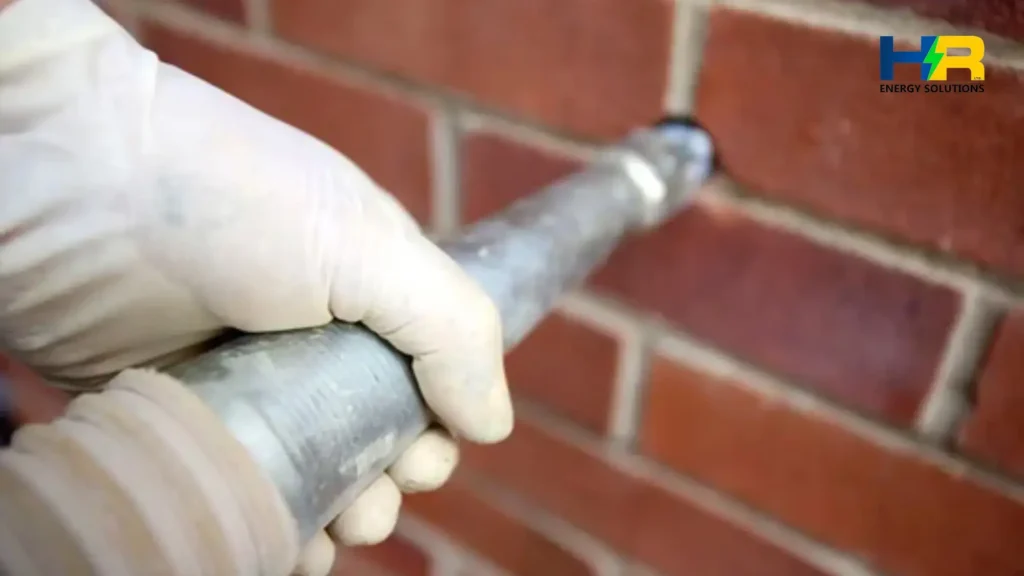
However, it might be worth considering a top-up if:
- The insulation was installed before the mid-1990s, using older methods or materials.
- You suspect the cavity was only partially filled.
- You notice cold patches, damp spots, or rising heating bills.
A professional survey can confirm whether the existing insulation is still performing well. If topping up is needed, it’s usually a quick and cost-effective fix especially when done alongside other home energy improvements under government schemes.
11. What Are the Costs Associated with Topping Up Cavity Wall Insulation?
The cost of topping up cavity wall insulation depends on your property type, total wall area, and whether any remedial work is needed before adding new material. Below is a general estimate for topping up based on common UK property types:
Estimated Costs by Property Type
| Property Type | Wall Area (approx.) | Top-Up Cost Range | With ECO4/GBIS Grant |
|---|---|---|---|
| Mid-Terrace House | 50 – 70 m² | £300 – £450 | Likely Free |
| Semi-Detached House | 70 – 90 m² | | |
| Detached House | 100 – 150 m² | £600 – £900 | Likely Free |
| Bungalow | 60 – 80 m² | | Likely Free |
| Maisonette / Flat | 40 – 60 m² | £250 – £400 | Likely Free |
💡 Note: These are average UK prices for top-up installations only. Full cavity wall insulation typically costs more but is also widely grant-funded. All figures exclude VAT and assume standard access.
If your property was insulated more than 20–25 years ago, or you’re noticing cold spots or condensation, a top-up might make a noticeable difference — and with ECO4 support, many homes pay nothing at all. Book a free cavity check with H&R Energy Solutions to find out if your insulation still performs or needs attention.
12. Potential Drawbacks of Cavity Wall Insulation
While cavity wall insulation is highly beneficial for most suitable homes, it’s important to be aware of potential issues particularly when installed without a proper assessment. Possible risks include:
- Damp problems if insulation is installed in walls that are already wet, poorly ventilated, or exposed to driving rain.
- Not all homes are suitable some properties with narrow cavities, rubble-filled walls, or structural defects should not be insulated.
- Poor installation can lead to cold spots, uneven insulation, or thermal bridging.
These risks are easily avoided with a professional pre-installation survey, which H&R Energy provides for free. We assess your walls, exposure level, and ventilation to ensure the insulation will perform effectively and safely.
Frequently Asked Questions
Why Are People Removing Cavity Wall Insulation?
Some people remove cavity wall insulation because it was installed in unsuitable properties or done poorly. This can lead to damp, mould, or cold spots — especially in homes exposed to wind-driven rain. Removal is usually only needed if the insulation has failed or is causing issues.
Does Cavity Wall Insulation Increase House Value?
Yes, it can. By improving energy efficiency and EPC ratings, cavity wall insulation makes a home cheaper to run and more appealing to buyers. It’s a good long-term investment that adds value and comfort.
Why Is My House Cold Even with Cavity Wall Insulation?
Cavity wall insulation only stops heat loss through walls. If your home still feels cold, it could be due to poor loft insulation, draughts, or old windows. It may also be a sign that the insulation wasn’t installed properly or has degraded.
Conclusion
For most UK homeowners with suitable properties, cavity wall insulation remains one of the best value energy efficiency upgrades in 2025. It helps you:
- Lower heating bills by up to £400 per year
- Improve indoor comfort all year round
- Increase your EPC rating, potentially raising property value
- Reduce your carbon footprint
- And best of all it may be completely free under the ECO4 scheme
As long as your property is suitable and the installation is done correctly, cavity wall insulation is absolutely worth it. H&R Energy Solutions offers free surveys, grant support, and guaranteed installation making the process simple and hassle-free.


